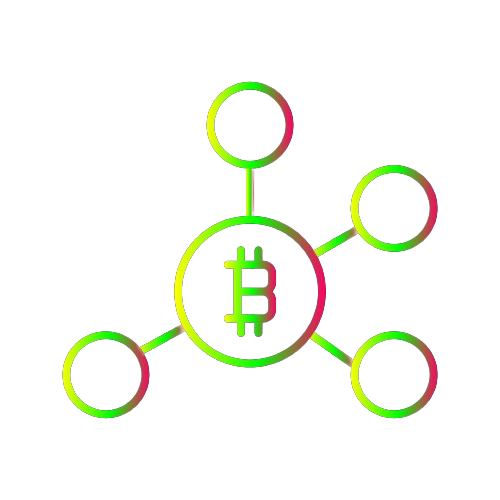
In recent years, automated Bitcoin trading bots have exploded in popularity among cryptocurrency traders. Algorithmic trading programs promise the ability to capitalize on market opportunities faster and more efficiently than manual trading. But are these Bitcoin bots reliable and effective for generating consistent profits? In this article, we will delve into the pros and cons of Bitcoin trading bots and assess if they deliver on their promises for retail cryptocurrency traders.
Benefits of Automated Bitcoin Trading Bots
Emotionless Trading
One of the biggest advantages of Bitcoin trading bots is their emotionless execution. Bots open and close positions strictly based on trading parameters and algorithms without any of the fear, greed, or hesitation that often impedes human traders. By trading rationally based on strategy rules, bots potentially avoid emotional errors and irrational decisions.
24/7 Market Access
Bitcoin never sleeps, operating 24/7 on a global scale. Humans, of course, need to sleep. Trading bots allow access to Bitcoin markets around the clock since algorithms can scan prices and execute trades without rest. This expanded trading window means more opportunities to capitalize on emerging trends and volatility.
Faster Reaction Times

Automated bots can react to market movements much faster than humans. By instantly executing trades programmed based on certain signals and price action, bots can get in and out of positions more nimbly to capture smaller windows of opportunity. Speed is especially critical for high-frequency strategies.
Improved Risk Management
Trading algorithms allow precise implementation of risk management rules like position sizing, stop losses, and profit targets. Bots consistently apply programmed logic without wavering. Automated risk management potentially minimizes losses on losing trades and maximizes gains on winners.
Supports Scalping and High-Frequency Strategies
Scalping and high-volume trading strategies that capitalize on small, rapid price movements require consistently fast reactions and rigid discipline. Trading algorithms are ideal for executing such strategies efficiently and effectively. Bots can process current market data and act on signals faster than a human ever could manually.
Potential Downsides and Risks of Bitcoin Trading Bots
Programming Challenges
While Bitcoin trading bots offer many potential benefits, building, programming, and maintaining them requires substantial skill and experience. Designing profitable algorithms requires extensive coding, technical analysis, and backtesting knowledge most retail traders lack. Bots need regular monitoring and upgrades as market dynamics shift.
Software Errors and Failures
All code is prone to bugs or errors. Bot algorithms are extremely complex. Even small coding errors or mismatches between live market action and programmed assumptions can lead to major losses or missed gains. Server outages or other technical failures can also halt automated systems, resulting in lost opportunities or unplanned open positions.
Overoptimization Pitfalls
Backtesting bot strategies on historical price data can overoptimize systems by overfitting past market behaviors. Effective bots must be adaptive, as current live market action will rarely exactly match past periods. Overfit systems often fail to generate profits in actual trading. Finding the right balance is challenging.
Potential Market Distortions

As algorithmic trading proliferates, some theorize it could distort natural Bitcoin market dynamics and price discovery by reacting to signals faster than human traders can perceive them. Trading dominated by bots rather than real supply and demand could inject artificial volatility. Regulations may be needed as adoption increases.
Security Vulnerabilities
Like any software system, trading bots and accounts can be vulnerable to hacking, theft, and platform outages. Programming flaws could allow unauthorized access to exchange accounts and bot-controlled funds. Executing automatic trades also inherently relinquishes control compared to manual trading.
Difficulty Beating the Market Consistently
Beating the market over sustained periods is extremely difficult for even professional human traders. Programming algorithms to consistently outperform buy-and-hold strategies or index funds rarely succeeds. Poorly designed bots may win on backtests but fail in live trading environments. Expectations for long-run profitability should be tempered.
Do Bitcoin Trading Bots Deliver Profits?
Given the challenges involved in bot programming, the evidence on whether Bitcoin trading algorithms can reliably deliver consistent excess returns over buy-and-hold strategies is mixed at best. While bots offer some theoretical benefits, efficiently translating those into real-world results has proven difficult. Bots seem more effective for short-term scalping strategies than long-run position trading.
For most retail traders who lack advanced programming skills, third-party bot services seem a better option than building in-house algorithms from scratch. However, the track record of such services in delivering reliably profitable algorithms remains questionable. Many seem to offer more marketing than actual substance or performance transparency. Trusting bot performance claims at face value is ill-advised.
Open-source bot frameworks that allow users to develop basic trading strategies or social trading platforms that surface strategies created by other users provide a middle ground, letting traders leverage some automation without needing to code algorithms entirely from scratch.
Though bots may outperform humans in the speed of analyzing data and placing orders, matching or surpassing human discernment of emerging trends, insight into crowd psychology, and long-term perspective remains a challenge. For discretionary traders, bots likely serve best as trading tools to complement human strengths like pattern recognition rather than a complete replacement.
Precautions When Using Bitcoin Trading Bots

For traders interested in exploring Bitcoin algorithmic trading bots, either building systems themselves or using third-party bot services, the following precautions are recommended:
Start small – thoroughly backtest strategies and use real capital sparingly at first to evaluate performance.
Use proper risk management settings – bots allow tight control over risk but must be programmed judiciously.
Monitor performance closely – bots require ongoing oversight, maintenance, and periodic reoptimizing.
Have backup systems – ensure contingency plans for bot failures, exchange outages, and account access problems.
Maintain trading skills – the ability to trade manually retains importance despite relying on bots.
Consider costs – factor in exchange fees, server expenses, and software costs to determine if profits justify costs.
Avoid overoptimizing – balance fitting historical data with retaining adaptivity to current market conditions.
The Verdict on Bitcoin Trading Algorithms
Bitcoin trading bots offer tantalizing trading advantages in theory and are a tool all serious traders should understand. However, expectations about reliably earning consistent excess returns through algorithmic systems alone should be tempered. Bots are complex tools requiring substantial expertise. For most traders, utilizing bots to complement rather than replace manual trading seems the prudent approach at this stage in Bitcoin and algorithmic trading maturity. With precautions and realistic expectations, Bitcoin trading algorithms can provide another arrow in the trader’s quiver but are unlikely to be a magic bullet replacing human insights and analysis. As with all trading tools, developing skills in bot programming, strategy development, and implementation represents another way to potentially gain an edge with rigorous practice.
Conclusion
Bitcoin trading bots offer an intriguing option for executing strategies faster and more efficiently than manual trades allow. But effectively programming reliable profitable algorithms requires advanced technical skills most retail traders lack. While appealing in theory, bots come with significant practical challenges and risks to consider. For traders unwilling to dedicate time to build expertise in bot development, utilizing third-party services or open-source bot frameworks to support manual trading activities may deliver a better risk-reward ratio than attempting to generate returns through algorithmic systems alone. Above all, expectations for Bitcoin trading bots should remain realistic. Bots can enhance human trading activities but are unlikely to replace the need for discretionary analysis and insights anytime soon.